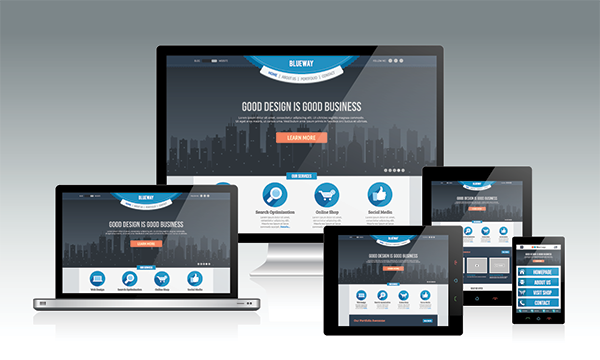Marketing
 After covering ways to make your site attractive, searchable and actionable, it’s time to think about whether or not the tactics you’re using are working. Your site, like your agency, is unique, and what works for others may not work for you and your client base. To find out what does work, you’ll need to set up and monitor specific site analytics.
After covering ways to make your site attractive, searchable and actionable, it’s time to think about whether or not the tactics you’re using are working. Your site, like your agency, is unique, and what works for others may not work for you and your client base. To find out what does work, you’ll need to set up and monitor specific site analytics.
Analytics are a way to measure different aspects of your site, such as how users found your site, how long they stay on each page, and how many unique visitors you get each month. Monitoring analytics help you judge your site’s effectiveness. When gathering analytics you should look at stats that answer the following questions:
HOW is your site found?
These stats help you determine the different ways current and potential clients find your site.
- Direct visits: Users who typed your website into their address bar or have it saved as a bookmark
- Organic visits: Users who came to your site through unpaid search results
- Referral visits: Users sent to your site by other sites (i.e. insurance raters, blogs, etc.)
- Top non-branded keywords: Keywords that send people to your site. These do not include your agency’s name, but are something like “auto insurance Ohio”.
WHERE do users go?
These categories let you know which pages are attracting users and what they’re doing on these pages.
- Top landing pages: These are the pages through which users enter your site. Direct visits are usually to the home page, but search and referral visits could send users to other pages like “Request a Quote” or “About Us”.
- Top visited pages: Shows which pages are visited most often, and for the longest length of time.
- Bounce rate: This is when a user visits your site and leaves without interacting with a page.
- Percent exit: Similar to bounce rate, this shows the percent of users who leave your site from a specific page.
WHERE, WHEN and HOW OFTEN do users contact you?
These stats are usually found through:
- Number contact forms completed
- Most effective call to action
- Percent total site visitors completing a form
- Most effective day and time for completed forms
Other great stats to look at include pages indexed in Google and link popularity. Pages indexed shows you which pages on your site are known by Google, making it easier for Google to direct users to those pages. Link popularity provides info on the number of links to your site from other websites, and the quality of the sites that link to you. These stats are helpful in your searchability, which, as it improves, helps you bring in more potential clients.
Google Analytics is a great free tool for tracking your site’s stats, or you can ask your site’s administrator if they provide analytics. Regardless of which you use, have a professional look over your stats to analyze them and provide advice on how you can improve your site’s look, usability and reach.
Other great contacts to help improve your site are those in your agency management systems user group. We at SIS know the importance of connecting with other agency owners, and our NASPA user group is always buzzing with new ideas. To find out more about NASPA, and the latest updates to Partner XE, contact us today!
Marketing
 In our last post, we looked at ways to make your website stand out, showing your agency’s reliability and great service. But, no matter how great your website is, it doesn’t mean much if it can’t be found.
In our last post, we looked at ways to make your website stand out, showing your agency’s reliability and great service. But, no matter how great your website is, it doesn’t mean much if it can’t be found.
Most potential clients will do an online search for independent insurance agents in their area and, if you want to be on that list, you’ll need to use the right tools to optimize your site for search.
There are many ways to optimize your agency’s site, but we’ll focus on three of the most efficient ways for independent insurance agencies:
Backlinks
Search engines have different ways of judging reputable websites, and one of the most common and well known is the number of reputable sites linking to it. You can gain links by asking for them from business partners or networking groups. You can also get links by writing great content that valuable sites want to share, or by writing as a guest blogger. Just be careful about which sites pick up your posts. While gaining links from reputable sites bolsters your searchability, links from poorly-ranked sites can hurt your online reputation.
Social Media
Social media brings you a double benefit: additional links each time you post a link to your site, and presence outside of a search engine. More and more people look to social media before bringing their business to an agency, and your presence on social media shows them you’re committed to serving your clients in every way possible. Plus, it’s another place where your agency can be found online, and will help drive traffic to your beautifully designed site.
To experience social media success, ensure you are posting quality content and you’re posting often. The better and more relevant your posts, the more likely they are to be shared, bringing you even more quality links to boost your search engine ranking
Local Focus
The best way to get local search traffic is by adding locality to your website’s page titles. When search engines look at your pages, they’ll focus on these titles first, and then on the words on the page. Simply adding “Columbus” or “Ohio” to the titles of your site’s pages will boost your credibility for an “insurance Ohio” search. Also, make sure your address is included in the footer on every page of your site – the more your agency’s name and its location are found together on the web, the more likely your site will pop up when someone searches for a local insurance agency.
You should also list your website on local listing sites like Google+ Local, Yelp, Bing Places, Internet Yellow Pages, and Yahoo! Local. This will again link your agency name with your location another place
As you implement these techniques to make your site findable, you may come across more ways to build your online presence. If you’re a Partner XE users, you can share these tips with our user group. To find out more about Partner XE, its community and functionality, contact us today!
Marketing, Technology Trends

Your website is the online storefront to your independent insurance agency. When potential clients go window shopping, you want them to stop at your agency and come in. If your website looks sloppy or outdated, you’ll give the impression that your agency is sloppy and outdated as well. Ultimately, when a client sees your website, they are gathering information to answer the question: “Can I trust them?”. If you can’t be trusted to keep a good website, why would they trust you with their business?
Show these potential clients your agency is a trustworthy partner! In order to have a website that give this impression you’ll need a few key elements.
Attractive design
First impressions are important. Make sure your site has a pleasing look. Stay away from large blocks of text, and avoid clutter. Also, make sure your site is built so that it can easily adjust for smartphones and tablets, and won’t take too long to load on each.
Easy Navigation
Make sure your site is organized in a logical manner and that pages are named appropriately. This includes using valuable keywords in page titles, so they can be easily searched and indexed by search engines (read more in our next post!). If a user can’t find what they’re looking for, they are likely to get frustrated and leave. By making your site easy to use, you’ll keep them around – and research shows the longer a user is on a website, the more likely they are to make a purchase or request more information.
Valuable Information
Great websites give users exactly what they’re looking for, and none of what they’re not. You want to give potential clients access to things that make their life easier, like online quoting or claim filing. When a potential client sees these features, they’ll see you value client experience, making them more likely to bring you their business. Be careful about putting too much information in one place, however, as it can look cluttered and be overwhelming.
Strong Call to Action
No matter how great your website looks and functions, you won’t find success without giving users a clue on what to do. With a strong call to action, you bring users along in the buying or lead capturing process. A good call to action effectively uses size, shape, color, placement and wording to get the message across and compel users to take the next step.
Once you have a website that really shows off your agency, you need to make sure people can find it. In our next post, we’ll look at optimizing your site for web search and other ways to get your name out there online.
SIS knows online presence plays a big part in making your agency know, and we can help by streamlining data between your website and our innovative agency management system, Partner XE. Contact us today to find out more!

Marketing, Sales
Your insurance agency’s marketing goal is to stand out among the noise. Identifying and investing in serving a niche market is one of the most efficient and effective ways to achieve this challenging goal.
When you serve a niche market, you have less competition, making it easier to gain new customers in a specific arena. Your agency is set apart as providing “X” type of insurance, making you distinctive. PIA National’s 2022 Independent Agent Survey found that respondents devoted more than 20% of their book of business to a niche market. You, too, can capitalize on this valuable strategy.
Identifying Your Niche
The first step in capitalizing on a niche market is deciding where to focus. There are a few factors to consider when selecting a niche market, such as market saturation, agency expertise, and interests. It’s best to find a niche that has a low market saturation, is an area your agency has some knowledge about, and one that is particularly interesting to you or members of your team. With these elements combined, you are more likely to break into this niche area successfully.
One of the ways you can find your niche is by looking at your agency data. See if there is a specific area where you see a coverage gap or a pattern in your longest-standing customers. You can also talk with your team and see what problems they find interesting. From there, do research to identify the need for this particular niche in the markets you serve and gain some baseline understanding of what this particular area needs in terms of coverage.
Capitalizing on Your Niche
Once you know your target area, start gathering as much data as possible. Use your internal analytics to see who among your customers may have interest, and leverage marketing automation to serve them information about your new coverage. This data will also help you see how you can grow this niche area by identifying common coverage among this segment.
You’ll also need to grow your expertise in this specific niche area. While you should already have a baseline, you need significant depth to establish yourself as the go-to agency. Invest time in learning more about your niche market. Attend conferences and get involved in industry groups to get on-the-ground intel about what individuals or businesses in your niche want and need. Get endorsements from your current niche customers. The more you can show off your expertise, the better.
Marketing Your Niche
Your next step is to market your niche to customers and prospects. The only way you can capitalize on your target area is to let people know you’re an expert in that specific arena. Start by adjusting your SEO strategy, and adding keywords that pertain to your particular niche. Add those words to your website and, if possible, invest in online ads to pop up when individuals search for that niche within your coverage area.
Beyond SEO, you should also add a page about your niche on your website and, if you have a blog, add a category dedicated to it. Be intentional about producing content related to your niche and highlight it regularly on your social media. Another great marketing avenue is to provide informational sessions to local businesses or organizations that fit your niche profile. The goal is to get your name associated with your niche anywhere and everywhere.
Other Elements to Consider
A few other areas to consider when breaking into your niche are carrier coverage, staffing, and internal processes. Before diving into your niche, be sure you have at least one carrier that covers your determined area. Ideally, you should have three to five carriers available to offer some choice for customers.
You should also consider adjusting your team structure and internal processes to facilitate your niche coverage. Perhaps you have individuals who already have some expertise in the niche area you can move into new positions. Maybe you need to start looking for a new hire to manage your new specialty better. Consider the updates you need to make ahead of launching your new initiative.
Partnering with the Right Provider to Help You Find Your Niche
At Partner Platform, we’re constantly working on making it easier for our agencies to grow their reach. Our integrated data and analytics make it simple to gain the information you need to identify and capitalize on your niche. From there, our Marketing Automation Manager and Producer Results Manager CRM are designed to help our agencies get the word out and track engagement.
See how we’re working with our tech partners to stay on the cutting edge, keeping our Partner Platform agencies nimble and a step ahead of the rest. Fill out a contact form here or get in touch at [email protected] or 800.747.7005, Option 6 to find out more.

Choosing an Agency Management System, Community
When Lara Moffitt began as CEO of MHJ Insurance, her first order of business was to find a new agency management system. She knew their old system was complicated, expensive, and had poor customer service. It was clearly time for MHJ to make a change.
So, Lara rallied her team to start their search for a new agency management system provider. The three-month-long project included a series of interviews, demos, and plenty of internal discussions about what was working and what wasn’t.
In the end, Lara’s team saw SIS and Partner Platform as the
best choice for their agency. Since signing on, they haven’t looked back.
In our conversation, we covered:
- What Lara and her team looked for in an agency management system
- How they conducted their agency management system search
- What made Partner Platform and the SIS team stand out
- How their transition experience went
- And more!
You can see MHJ’s story and our other Partner Platform agency stories on our Client Stories page here. Discover more about the Partner Platform agency management system suite, our technology partners, and our community on our website at sispartnerplatform.com.
Page 3 of 41«12345...102030...»Last »

 After covering ways to make your site attractive, searchable and actionable, it’s time to think about whether or not the tactics you’re using are working. Your site, like your agency, is unique, and what works for others may not work for you and your client base. To find out what does work, you’ll need to set up and monitor specific site analytics.
After covering ways to make your site attractive, searchable and actionable, it’s time to think about whether or not the tactics you’re using are working. Your site, like your agency, is unique, and what works for others may not work for you and your client base. To find out what does work, you’ll need to set up and monitor specific site analytics. In our
In our 


